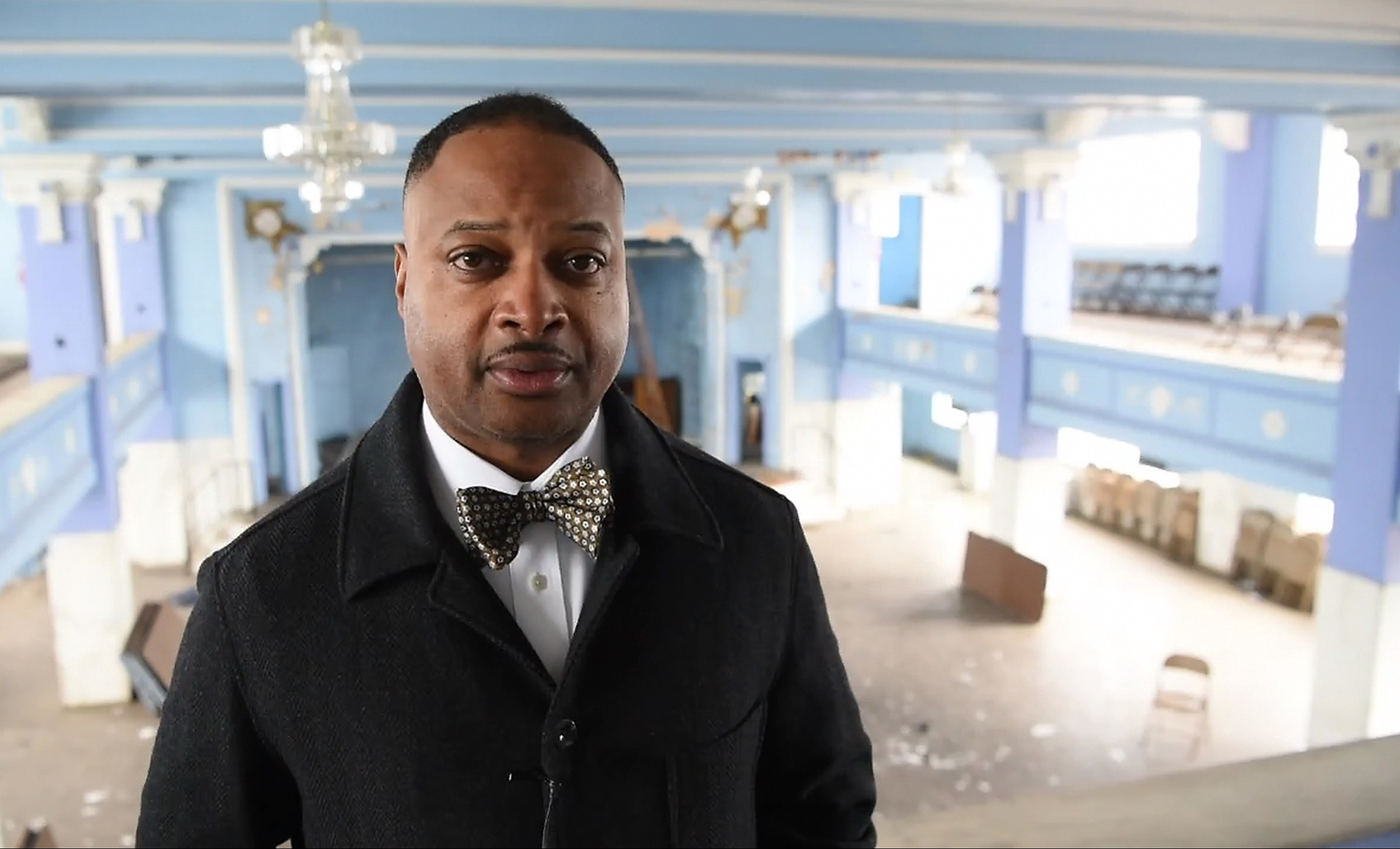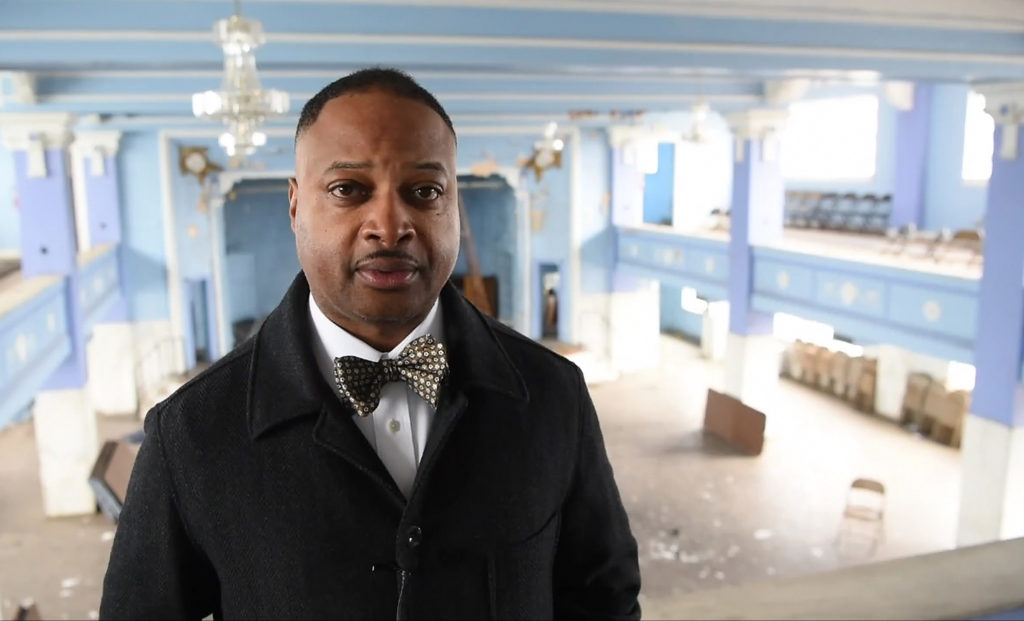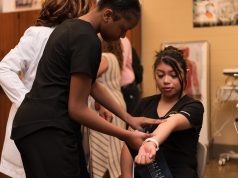
By Monique Jones
The Birmingham Times

A refurbished the Most Worshipful Prince Hall Grand Lodge, Free and Accepted Masons (F & AM) of Alabama, Temple Building in downtown Birmingham would allow younger generations to learn about the history of the Prince Hall Masons and their influence in the Magic City.
The first black Masonic Order, African Lodge No. 459, was established in Boston, Mass., in 1787 by Prince Hall, a Revolutionary War veteran. The lodge was created after Hall and other black free men were denied admittance into colonial Freemason organizations.
The Prince Hall Masonic Order follows in the Freemason tradition of teaching tolerance, equality, self-improvement, and social responsibility.
“Colored” Masonry in the state of Alabama came into existence around 1867, just two years after the end of the Civil War. In 1870, the first Colored Grand Lodge in the state of Alabama was organized in Mobile. In 1922, construction of the Most Worshipful Prince Hall Grand Lodge, F & AM, of Alabama Temple Building began at 1630 Fourth Avenue in Birmingham; it was completed in 1924.
The lodge was designed by two well-known African-American architects, Taylor E. Persley and Walter T. Woods. And the Order raised $720,000 to finance the project.
“Years of saving, proper investments in other properties, membership donations, and perhaps community contributions” went into raising the capital, said Right Worshipful (RW) Grand Junior Deacon and Operations Manager William Dean Anderson. “[There was a] single-minded goal to create a building specifically to serve the African-American community because … we had been shut out of the downtown area [due to] the apartheid system in place.”
Joseph C. Clark III, CEO of Community Concepts Agency Inc., the company hired to oversee the project, said, “To have $720,000 back then … even for white people, that was a small fortune.”
More than a Meeting Place
After the building was completed, it was used as more than a meeting place for masons—it was the center of Birmingham’s black community.
“… I’ve come to realize that this building always has been more than just a place where masons come to meet,” said lodge Grand Master Corey D. Hawkins Sr. “It was actually a hub for the 4th Avenue District, a place where African-Americans could go and not have to worry about being forced to enter through the back door or sit in the balcony. If they sat there, it was by choice.”
Alabama’s Prince Hall Masons have started a GoFundMe page to raise $500,000 for the first phase, which “will cover the planning, assessment work (environmentally-safe removal of potentially hazardous materials), and further the redevelopment concepts” for the building. Other funding is expected to come from the National Park Service.
Donations for the Most Worshipful Prince Hall Grand Lodge, F & AM, Temple Building revitalization project can also be sent to the Prince Hall Legacy Foundation Inc.: 319 17th St. N., Suite 220, Birmingham, AL 35203.
Family Legacy
For Hawkins and Anderson, restoring the Masonic Temple will help continue the rich history of Alabama’s masons on a personal level.
Anderson said, “My mother’s brothers were masons. Her dad was a mason. And on my father’s side … I know [at least two] of [my father’s] brothers were masons, as well.”
Hawkins said, “My father’s a mason. My grandfather was a mason. My great-grandfather was a mason. It’s been passed down. Two of my brothers are masons, as are some of my uncles and cousins. It’s been in my family for years.”
Well-known Prince Hall Masons include Tuskegee University founder Booker T. Washington; U.S. Supreme Court Justice Thurgood Marshall; civil rights leader Ralph Abernathy; educator and historian W.E.B. DuBois; bandleader Duke Ellington; former Morehouse College President Benjamin Mays; “Father of the Blues” W.C. Handy, and many others.
For Anderson, who has served as Grand Junior Deacon since 2011, masonry means “pride.”
“It’s a family organization that, when you’re growing up, you don’t quite understand it, but you see how it affects your elders,” he said. “… As you get older and become more exposed, you have the opportunity to put the pieces together.”
Hawkins, who has served as the lodge’s Grand Master since 2013, said he is enjoying his tenure, which is a continuation of his family’s commitment to the organization.
“It’s challenging, but I enjoy serving the membership and doing what I can to better the organization,” he said. “I know masonry is a way of life, so our goal is to make good men better. All those [family members] I mentioned … are good men, and … I think masonry had a role to play in that—[helping them become] the type of people they are.”
Other stories in this series:
Building history: Inside the closed Masonic Temple in Downtown Birmingham
Restoring The Most Worshipful Prince Hall Grand Lodge Building to its grandeur




